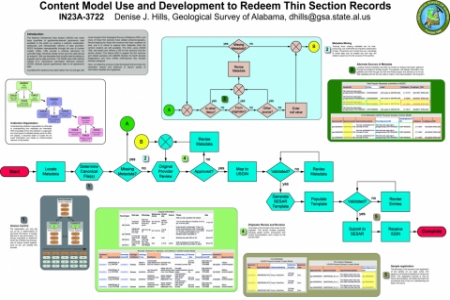
Event:
Abstract:
The National Geothermal Data System (NGDS) is a catalog of documents and datasets that provide information about geothermal resources located primarily within the United States. It has made large quantities of geothermal-relevant geoscience data available to the public by creating a national, sustainable, distributed, and interoperable network of data providers. NGDS facilitates interoperability through the use of content models (CMs). CMs provide a schema (structure) for submitted data. Schemas dictate where and how data should be entered. CMs use templates that simplify data formatting to expedite use by data providers. The NGDS uses CMs utilizing USGIN (U.S. Geoscience Information Network) schema. USGIN extends beyond geothermal data to all geoscience data.
Countless thin sections have been taken from oil and gas well cores housed at the Geological Survey of Alabama (GSA), and many of those thin sections have related photomicrographs. Record-keeping for these thin sections has been scattered at best, and it is critical to capture their metadata while the content creators are still available. The GSA, using USGIN CMs, has tested and refined a CM for thin sections and thin section photos. This allows GSA to register the thin sections and related samples with SESAR (System for Earth Sample Registration) and have IGSNs (International Geo Sample Number) assigned. By developing a process model that provides the necessary checks and balances to assure quality of information, the GSA is able to make these previously dark data to light.
DOI /EZid :
http://dx.doi.org/10.6084/m9.figshare.1266424
Collaboration Area:
Attachments for download:
Creative Common License:
Creative Commons Attribution 3.0 License


